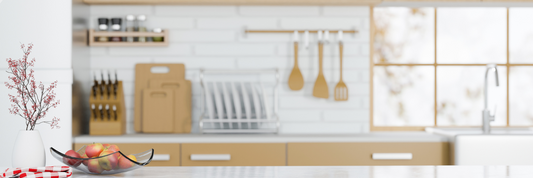Opening a bottle of wine can seem intimidating, especially if you’re new to the process. Doing it properly is key to preserving the wine’s flavor and ensuring a smooth serving experience. Whether you’re hosting a dinner or enjoying a quiet evening, knowing how to open a wine bottle correctly is a skill worth mastering. In this guide, we’ll walk you through everything you need to know about opening a wine bottle with confidence and style.
-
How Long Does Alcohol Expire? A Guide to the Shelf Life of Liquor
- Bottle Closures: A Comprehensive Guide to Types, Uses, and Importance
Understanding Your Wine Bottle Closure The Classic Cork: What You Need to Know
Cork has been the traditional closure for wine bottles for centuries. It is made from the bark of the cork oak tree and provides a seal that allows the wine to breathe while also protecting it from oxidation. Proper bottle storage on its side ensures the cork stays moist, maintaining its elasticity and sealing capabilities.
When using a corkscrew, it’s crucial to extract the cork properly. A hastily pulled cork can break, leaving remnants inside the bottle, which can spoil the tasting experience. To prevent this, always twist the corkscrew gently and pull straight up. If you encounter resistance, pause and make sure you are not pushing the cork sideways, which can lead to breakage.
The Convenient Screw Cap: A Twist and You're Done
Screw caps have gained popularity in the wine industry for their user-friendly design. To open a bottle with a screw cap, simply hold the bottle firmly and twist the cap counterclockwise. This closure ensures an airtight seal without the risk of cork breakage or spoilage due to cork taint.
Many wine enthusiasts appreciate the simplicity of a screw cap, especially for informal gatherings. It’s a reminder that great wine doesn’t always require a ceremonial opening.
Other Closures: Crown Caps and More
Less common closures like crown caps are primarily found on sparkling wines and some beer bottles. To open a bottle with a crown cap, you’ll need a bottle opener. Position the opener under the cap and lever it upward, applying gentle pressure until the cap pops off. This method is straightforward, but be cautious of flying caps which can be a surprise for the uninitiated.
Essential Tools for Opening a Wine Bottle

The Waiter's Friend: A Versatile Tool
The waiter's corkscrew is a staple in wine service and an essential tool for wine lovers. It typically includes a foil cutter, a worm (the screw), and a lever.
- Foil Cutter: Start by using the foil cutter to remove the capsule on top of the cork. Place the cutter around the capsule and twist it to slice the foil neatly.
- Inserting the Worm: Position the tip of the worm in the center of the cork and twist it down into the cork until about three-quarters are inserted.
- Using the Lever: Once the worm is in place, position the lever on the lip of the bottle and pull the handle upward. Continue to pull until the cork pops out.
This tool epitomizes versatility and is often the go-to choice for both professionals and casual wine drinkers.
The Wing Corkscrew: Easy Leverage
The wing corkscrew is another popular option, especially for those who prefer a more visual indication of the process. To use it:
- Insert the Worm: Place the worm over the cork and twist down until the worm is securely lodged in the cork.
- Squeeze the Wings: The design features two 'wings' that rise as you twist the handle. Squeeze the wings down, and they will lift the cork out as you continue turning the handle.
This corkscrew is user-friendly and ideal for those who may have difficulty with traditional corkscrews.
The Electric Wine Opener: Effortless Opening
If you’re looking for ease and comfort, an electric wine opener may be your best bet. These devices streamline the cork removal process with minimal effort:
- Place on Bottle: Position the electric opener on top of the cork.
- Press the Button: Simply press the button, and the electric opener will drill into the cork and automatically extract it.
- Remove the Cork: Once it has extracted the cork, press the button again to release it from the opener.
An electric wine opener is particularly useful for those who may have limited hand strength or simply want a quick and easy solution.
Other Helpful Tools (Foil Cutter, Wine Key)
Standalone foil cutters can also be handy, often featuring a rotary mechanism that makes quick work of capsule removal. Wine keys, which resemble waiter's corkscrews but are usually more minimalistic, can also serve well for basic cork extraction. These tools keep things simple and effective, ensuring you can enjoy your wine without unnecessary hassle.

Step-by-Step Guide to Opening a Corked Wine Bottle
Preparing the Bottle: Removing the Foil
Before you can enjoy your wine, it's essential to prepare the bottle by removing the foil that covers the cork. Here's how to do it neatly:
- Get Your Tools Ready: Start with a clean, dry cloth and a foil cutter or a small knife.
- Locate the Top of the Foil: Identify the point where the foil meets the neck of the bottle. This is usually a slight indentation.
- Make a Clean Cut: If you’re using a foil cutter, place the cutting edge at the indentation and press down while rotating the bottle. Alternatively, if using a knife, carefully slice around the neck below the top edge of the foil. Be cautious of sharp edges.
- Remove the Foil: After cutting, simply peel the foil away from the neck of the bottle. Dispose of the foil properly.
Taking these steps ensures a clean opening and prevents any foil from getting into your wine.
Inserting the Corkscrew: The Art of the Worm
Now that the foil is removed, it’s time to insert the corkscrew, which is often referred to as the “worm.”
- Position the Corkscrew: Hold the bottle firmly by the base with one hand. With your other hand, take the corkscrew and hold it vertically above the cork.
- Aim for the Center: Insert the tip of the corkscrew into the center of the cork. Aim to place it straight to avoid breaking the cork.
- Twist: Begin twisting the corkscrew in a clockwise direction. Keep turning until you’ve inserted about two-thirds of the worm into the cork.
Using a steady hand and focusing on alignment will make this process smoother.
Extracting the Cork: Using Leverage Effectively
With the corkscrew securely in place, it’s time to extract the cork using effective leverage.
- Engage the Lever: Most corkscrews have a lever arm. Hook the lever onto the lip of the bottle – this is crucial for leverage.
- Pull the Handle: Gently pull the handle of the corkscrew up. This action will start to lift the cork out of the bottle.
- Switch Positions if Needed: If you’re using a two-step lever corkscrew, once the first phase is complete, reposition the lever to the next notch and continue pulling.
- Complete the Extraction: Once the cork is nearly out, just give it a little pull by hand to finish removing it completely.
By using the leverage of the corkscrew, you minimize the risk of breaking the cork.
The Final Touches: Inspecting and Serving

Congratulations on opening your bottle! Here’s what to do next:
- Check for Cork Fragments: Inspect the cork to ensure no pieces have broken off into the wine. If any find their way in, use your clean cloth to scoop them out gently.
- Wipe the Bottle Neck: Use the cloth to wipe the neck of the bottle, ensuring there is no residual foil or cork debris. This step is crucial for a clean pour.
- Pour and Enjoy: You’re now ready to pour your wine into a glass and savor every sip!
This attention to detail enhances the overall experience of enjoying your wine.
Opening a Wine Bottle Without a Corkscrew: Clever Hacks
The Shoe Method: Using Force and Friction
If you find yourself without a corkscrew, fear not—there are alternatives. The shoe method is a surprisingly effective trick.
- Choose Your Shoe: Take a sturdy shoe with a flat sole (a sneaker works well).
- Position the Bottle: Place the bottom of the wine bottle into the shoe, ensuring it’s secure.
- Hit the Wall: With the shoe held firmly against a wall, give it a few firm taps. The impact will gradually push the cork out.
- Check Progress: After a few taps, check the cork. If not extracted yet, continue with more taps until it pops out.
This unconventional method relies on force and friction—use with caution, and ensure you have a sturdy shoe!
The Screw and Pliers Technique: A DIY Approach
If you have a screw and some pliers, you can tackle that cork with a handy DIY approach.
- Insert the Screw: Use a screwdriver to drive a long metal screw into the cork, leaving about half an inch exposed.
- Use the Pliers: Take your pliers and grip the exposed screw tightly.
- Pull Out the Cork: Carefully pull upwards to remove the cork from the bottle.
This method is effective—just ensure you're gentle to avoid damaging the cork or the bottle.

The Key or Serrated Knife Method: Careful Maneuvering
Another effective hack involves using a key or a serrated knife.
- Insert the Key or Knife: Place the key or knife at a slight angle into the cork, pushing gently.
- Twist and Work: Twist the key or knife to create leverage. Gradually turn or push down to lift the cork out.
- Finish with Grip: Once loose, you may need to pull it out by hand or with the key for leverage.
This method requires a steady hand and patience but can be a lifesaver when no corkscrew is available.
Pushing the Cork In (Use with Caution!)
As a final resort, you can push the cork into the bottle. However, this method should only be used if you have no other options due to wine contamination risks.
- Assess Your Tools: Make sure you have a blunt object (like a pen or the end of a wooden spoon).
- Push Firmly: Position the object against the cork and apply even, firm pressure to push it into the bottle.
- Be Cautious: Watch for bits of cork that may fall into the wine. This method can be messy.
While effective, it comes with risks—ensure it’s your last resort!
Tips for a Smooth Wine Opening Experience

Handle with Care: Preventing Breakage
Opening a wine bottle can sometimes be a daunting task, especially if you're faced with a stubborn cork. To prevent breakage and a smooth opening experience, follow these simple steps:
- Always insert your corkscrew straight into the center of the cork. This helps maintain stability and reduces the risk of the cork crumbling.
- When penetrating the cork, do it slowly and steadily. Rushing can lead to mishaps.
- If you notice the cork is particularly delicate, consider using a two-pronged cork puller, which can gently ease the cork out without putting excessive strain on it.
Dealing with Stubborn Corks
Stubborn corks can test anyone's patience. Here are some strategies to remove tightly stuck corks:
- Use a double-hinged corkscrew for better leverage. This type of opener allows you to pull with more control and support.
- If there's resistance, twist the corkscrew a little while pushing down. This can help loosen the cork’s grip.
- Sometimes, a gentle warming of the bottle neck can expand the glass slightly and make cork removal easier. However, be cautious not to overheat the wine.
The Sound of Success: The Perfect Pop (or Not)
Many people associate the joy of opening a wine bottle with the distinct "pop" of the cork. While an audible pop can indicate a well-sealed bottle and the freshness of the wine, it’s not always necessary for a successful opening.
Whether or not you get that pop, focus on the quality of the wine and the moment you're about to enjoy.
Practice Makes Perfect: Building Confidence
For those who might feel intimidated by opening a wine bottle, remember that practice makes perfect. Don't be afraid to practice with an empty bottle or one that you don't mind potentially mishandling. This can build your confidence and help you become more skilled in opening wine without anxiety.
Understanding Different Wine Closures (Revisited)

Opening Screw Cap Bottles: Simple and Straightforward
Screw cap bottles have revolutionized the wine opening experience. They eliminate the need for any tools, making them extremely versatile for casual drinking occasions. Just grip the cap and twist - it really is that easy!
Enjoy the convenience of screw caps during picnics or while traveling, as there’s no risk of cork breakage.
Dealing with Crown Caps on Wine Bottles
Crown caps are typically used on sparkling wines and some flavored wines. To open these bottles, a standard bottle opener works best:
- Position the bottle opener on the edge of the cap.
- Leverage it downwards until the cap pops off.
- Be ready for some fizz, as the gas buildup can cause rapid spillage if not carefully managed.
Opening Sparkling Wine: A Special Approach
Opening sparkling wine requires a bit more finesse to prevent spills. Here’s a technique to consider:
- Hold the bottle at a 45-degree angle, pointing it away from yourself and your guests.
- Make sure to untwist the wire cage slowly while keeping your thumb on top of the cork to prevent it from flying out.
- With a firm grip, twist the bottle (not the cork) while gently pulling on the cork. This will allow for the pressure to release gradually.
Conclusion
With the right techniques and understanding of various wine closures, opening a bottle of wine can be a simple and enjoyable task. Remember to handle the bottle with care, approach stubborn corks with persistence, and enjoy the moment regardless of whether you hear that coveted pop.
FAQ:
Q1: What is the easiest way to open a wine bottle?
A: Generally, using a waiter's corkscrew or an electric wine opener are considered the easiest methods. Screw-cap bottles are also very easy to open as they require no tools.
Q2: What if I don't have a wine opener?
A: There are several alternative methods, such as using a shoe, a screw and pliers, or a key. Refer to the "Opening a Wine Bottle Without a Corkscrew" section for detailed instructions.
Q3: How do I prevent the cork from breaking when opening a wine bottle?
A: Ensure you insert the corkscrew straight into the center of the cork and pull it out slowly and steadily. Using a double-hinged waiter's key can also provide better leverage and prevent breakage.
Q4: Is it okay to push the cork into the wine bottle if I can't get it out?
A: While it's a last resort, pushing the cork in can potentially contaminate the wine with cork fragments. It's generally better to try alternative extraction methods first. If you do push it in, be careful when pouring.




